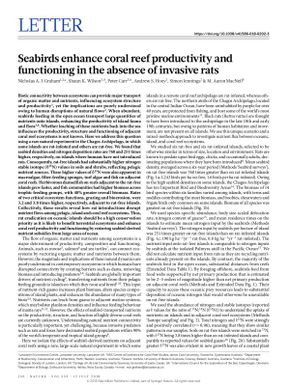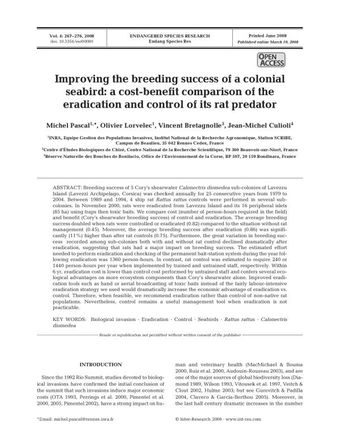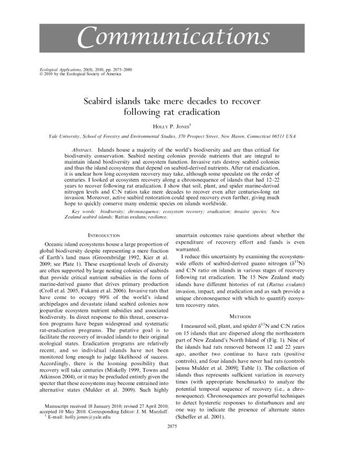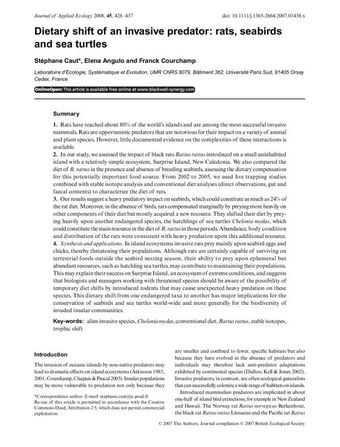Seabirds enhance coral reef productivity and functioning in the absence of invasive rats
- Description:
- Biotic connectivity between ecosystems can provide major transport of organic matter and nutrients, influencing ecosystem structure and productivity, yet the implications are poorly understood owing to human disruptions of natural flows. When abundant, seabirds feeding in the open ocean transport large quantities of nutrients onto islands, enhancing the productivity of island fauna and flora. Whether leaching of these nutrients back into the sea influences the productivity, structure and functioning of adjacent coral reef ecosystems is not known. Here we address this question using a rare natural experiment in the Chagos Archipelago, in which some islands are rat-infested and others are rat-free. We found that seabird densities and nitrogen deposition rates are 760 and 251 times higher, respectively, on islands where humans have not introduced rats. Consequently, rat-free islands had substantially higher nitrogen stable isotope (?15N) values in soils and shrubs, reflecting pelagic nutrient sources. These higher values of ?15N were also apparent in macroalgae, filter-feeding sponges, turf algae and fish on adjacent coral reefs. Herbivorous damselfish on reefs adjacent to the rat-free islands grew faster, and fish communities had higher biomass across trophic feeding groups, with 48% greater overall biomass. Rates of two critical ecosystem functions, grazing and bioerosion, were 3.2 and 3.8 times higher, respectively, adjacent to rat-free islands. Collectively, these results reveal how rat introductions disrupt nutrient flows among pelagic, island and coral reef ecosystems. Thus, rat eradication on oceanic islands should be a high conservation priority as it is likely to benefit terrestrial ecosystems and enhance coral reef productivity and functioning by restoring seabird-derived nutrient subsidies from large areas of ocean.
- Display date:
- 2018
- Collections:
- Secretariat of the Pacific Regional Environment Programme (SPREP)
- Publisher:
- Macmillan Publisher
- Content partner:
- Secretariat of the Pacific Regional Environment Programme (SPREP)
- Availability:
- Not specified
-
Copyright status: All rights reservedFind out more about what you are able to do with this itemThis item is all rights reserved, with means you'll have to get permission from Secretariat of the Pacific Regional Environment Programme (SPREP) before using it. For more information, please see our use and reuse page.What can I do with this item?Non-infringing useNZ copyright law does not prevent every use of a copyright work, and this item may be hosted by an international institute or organisation. You should consider what you can and cannot do with a copyright work.No sharingYou may not copy and/or share this item with others without further permission. This includes posting it on your blog, using it in a presentation, or any other public use.No modifyingYou are not allowed to adapt or remix this item into any other works.No commercial useYou may not use this item commercially.
Related items
Welcome and warm Pasifik greetings
The information on this site has been gathered from our content partners.
The names, terms, and labels that we present on the site may contain images or voices of deceased persons and may also reflect the bias, norms, and perspective of the period of time in which they were created. We accept that these may not be appropriate today.
If you have any concerns or questions about an item, please contact us.



